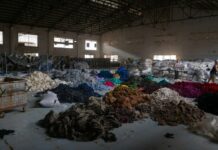The potential introduction of reciprocal tariffs by the United States could lead to a substantial decline in India’s exports, with estimates suggesting a decrease between $2 billion and $7 billion in the fiscal year 2025-26 (FY26), according to India Ratings and Research (Ind-Ra). The apparel and accessories sectors are identified as particularly vulnerable to these changes.
Ind-Ra’s findings indicate that India’s exports to the U.S. could fall between $1.78 billion and $7.33 billion in FY26. This downturn could have further implications for India’s economic growth, potentially reducing GDP growth by 5 to 20 basis points from the previously forecasted 6.6 percent. However, with a weighted average tariff differential of approximately 7 percentage points, Ind-Ra posits a more plausible scenario where exports to the U.S. may decrease by about $2 billion to $3.5 billion. This scenario would likely result in a GDP growth reduction of 5 to 10 basis points from the anticipated 6.6 percent, as stated by Devendra Kumar Pant, Ind-Ra’s chief economist and head of public finance.
The overall impact of these reciprocal tariffs on the Indian economy hinges on several factors, including the extent of the tariffs, the specific products targeted, the tariffs imposed on competing nations, and the ability of Indian exporters to identify alternative markets for their goods.
On a more positive note, ongoing bilateral trade negotiations, as well as defense and energy collaborations between India and the United States, may help to mitigate the negative effects of reciprocal tariffs on India. The domestic rating agency indicated that further clarity on this situation is expected to emerge over the next four to six weeks as discussions between the two governments progress. Sectors such as textiles and chemicals are particularly at risk if these tariffs come into play.



































